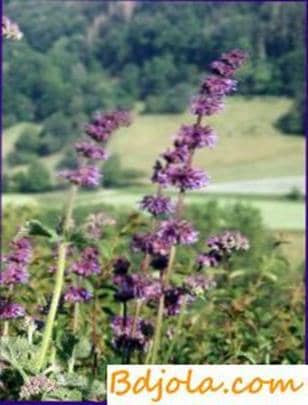The feeders of the on-site site

In order to partially fill the impotent periods, reserved areas, usually a few hectares in size, are organized. The size of the reserve site largely depends on the natural conditions, on which honey plants are planted in the main field and fodder crop rotations, and also on the size of the apiary. Under the reserve areas are allocated primarily uncomfortable land, located near the planned parking apiary.
It is clear that in order to ensure sufficient nectaricity of plants in the reserve section, the level of agrotechnics of cultivated honey plants should be high. Their sowing should be so calculated that they bloom and abundantly separate the nectar precisely at a time when other honey-plants that occupy large areas in the main crop rotations do not bloom. The selection of the medonos themselves, based on their economic value and nectariness, is also very important.
Often in the reserve areas used sainfoin, melissa, sweet clover and other crops that are of economic importance. Usually they are sown on seeds. In addition, in Ukraine, on the reserve sites are planted at different times, the phacelia, although not having more economic significance, is not an excellent medon.
Phacelia is a single plant with a height of up to 40-60 cm, having a branchy rigid-hairy juicy stem and dissected leaves. Flowers – violet, collected in inflorescences – curls.
It blooms in 6-8 weeks after sowing and color about one and a half month.
In the middle regions of Ukraine the phacelia, grown in good conditions of agricultural technology, yields 200 or more kilograms of honey per hectare, and in the southern regions – up to 1000 kg. Its flowers are beautifully visited by bees throughout the day.

Fig. Phacelia.
Phacelia seeds are small and therefore should not be buried deeper than 2-3 cm. The
It is better to sow a facial with a broad-rim method; while the seeding rate is reduced to 6-8 kg per hectare. With wide-sowing, it is easier to weed out the phacelia from weeds, and it gives more nectar.
Good results are obtained by planting the phacelia of the earliest periods, simultaneously with the sowing of arid cereals, but it can be sown at a later date if the soil has sufficient moisture.
At a young age, phacelia is suitable for animal feed, and in a more mature one for silage.
The phacelia can be used successfully as a stubble crop. Recently, its green mass is used for silage.
In addition, he successfully applied the seeding of the phacelia under the lupine, sown on a green fertilizer. The period of vegetation of lupine is much longer than that of phacelia, and by the time of plugging this mixture of phacelia, the main one is used by bees as a honey plant. The quality of green fertilizer from such a sowing of the lupino-phacelian mixture does not deteriorate, but improves, as the total weight; the smell of green mass is increased.
Such mixtures with other crops are very promising.
The feeders of the on-site site
